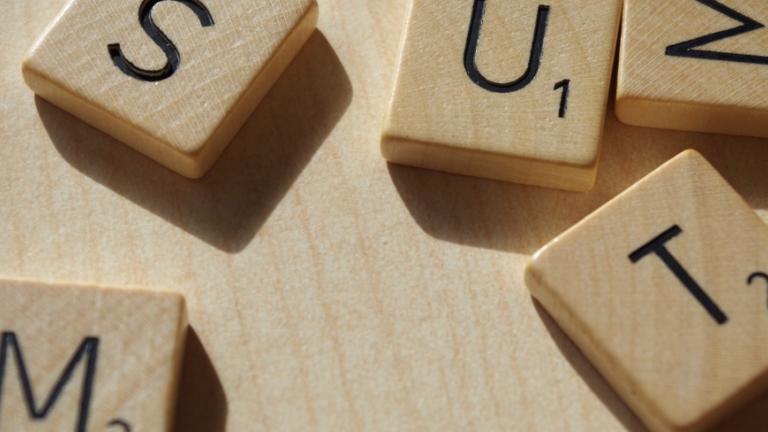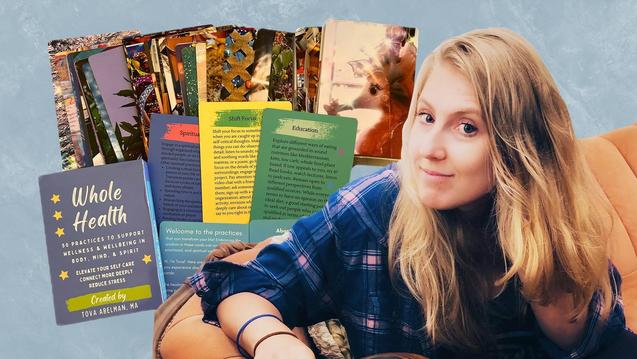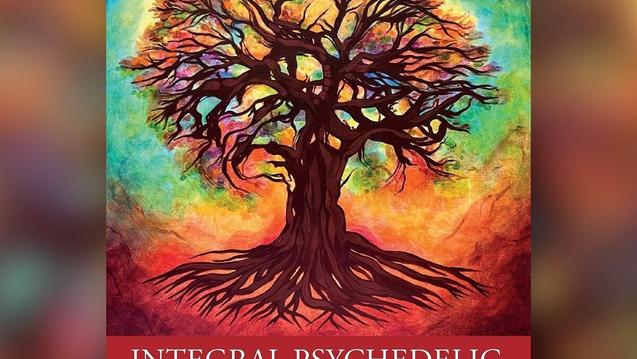An interview with Drama Therapy alumna Grace Walcott about her documentary, “River of Life LGBTQ+”

Novelty Keeps Your Brain Healthy
Consider Play, Improvisation, or Learning Something Entirely New
Our brains love newness. Who knew?
Well, you might have already known that in a subtle way: we notice if something is different in a loved one’s appearance, or our favorite grocery items aren’t in the customary shelf spot, or an unfamiliar auto expense is on the credit card statement. In fact, we’re so used to spotting newness that it may seem second nature by now.
“What’s that ding on my car door? That wasn’t there before.”
“Who moved my chair?”
The human brain is wired to seek out novel images, sounds, and words. We used to think that scanning activity of the brain was tied to survival (“Hmm…that growl in the night doesn’t quite sound like my mate’s usual snore….”) However, new findings indicate that novelty may be more often tied to motivation, learning, and reward.
Game designers take advantage of that finding. "League of Legends," one of the most popular online games today, keeps you motivated (a.k.a. addicted) to the worldwide competition by rewarding your beginner’s fledgling efforts as you knock off monsters and climb the fantasy ladder to champion status. But even a simple online game of "Word Scramble" or "Lumosity" can offer rewards in your quest to excel, and thereby provide stimulation for neurons.
Brain Buzz
The novelty switchboard in humans and higher mammals is located in a wide swath of the brain known as the SN/VTA (substantia nigra-ventral segmental area). Researchers noted through fMRI imaging how the SN/VTA fired when novel faces and scenes (called “oddballs”) were shown to study subjects. If the face was somewhat familiar, the SN/VTA was quiet. It only activated when significant difference or newness occurred. Not surprisingly, highly negative scenes didn’t make any impact—seems we’re all too used to scenes of violence or inhumanity—in this area of the brain.
The hippocampus and amygdala are linked to SN/VTA activity through memory and learning. There seems to be a straightforward motivational boost to explore our environments, to take risk and learn something new, in search of rewards. Ever think that learning is its own reward? Congratulations. You get the RBG-quality notorious brain certificate.
It does help to have a comfortable, trustworthy footing of familiar territory before setting out on your novel explorations. Language teachers report how their students progress faster at learning a language if new words are presented side by side with the familiar ones. Once you get “J’amerais aller a la bibliothèque,” it’s easier to muster “J’amerais aller sur Mars avec une fusée fabriquée par Elon Musk.”
Improvisation and Play
I’ve recently rediscovered how improvisational workshops are ideal for greasing the neuronal pathways for creative thinking and exploration. One clever improv exercise involves jumping into a vignette that your improv partner initiates. You’re not quite sure what the intent is—but no matter, you never want to leave your partner hanging out there with no counter-response, so you have to spontaneously, without judgment, without editing, seamlessly match their activity.
Those unrehearsed, unplanned moments demand that you’re fully present in a way that rivals a long-time meditator’s alpha state.
Yowza. It’s tough at first, but gets easier. The brain integrates audio-visual input with cognitive processing, memory fill-in, and other somato-sensory signals. It feels like all your grey matter pistons are firing at once. You can actually end a two-hour evening of improv with a sigh from your brain—thanks for the workout. Expect to try it at an academic intensive within the Integrative Health Studies program.
Play
Can you recall the feeling of fresh, child-like joy at the height of summertime play? If not, maybe you didn’t quite get enough free, unstructured playtime in as a child. Don’t worry, it’s never too late. Play time that involves humor brightens your spirit, and the laughter that ensues creates a bounty of mental and physical benefits. Also, play can get you beyond the most miserable conditions. Watch Robert Benigi’s character Guido create a life-saving playful activity for his son as they overcome the hardships of war and imprisonment in the award-winning film The Beautiful Life.
Music
Learn to play an instrument. When an issue of the peer-reviewed journal "Brain and Cognition" reported that playing an instrument may keep musicians’ brains sharp and functioning with quicker reaction times than non-musicians, I noted how many more medical colleagues were taking up piano and string instruments at midlife and beyond. It didn’t matter that the study participants had more than seven years of training, the evidence was so impressive that sensory neural pathways were strengthened. It was worth plodding through Mozart’s “Minuet and Trio in G Minor.” It helps to ignore the fact that Mozart wrote it when he was five years old.
Dance
Dance whenever and however. Learn new dance routines. Take a hip-hop, ballet, tap, or ballroom dance class. Your brain will benefit from the cognitive and motor skill practice of breaking down steps (what ballet dancers call "marking") as you do a slow walk-through, then gradually build to performance speed. Both cerebrum and cerebellum enjoy synchronized fluidity. (Bergland, 2008).
In fact, any movement, as long as it’s not rote, repetitious, or bilateral-boring (like walking) qualifies as novelty movement. Especially the spin or twirl. (Not recommended if you have vertigo.) But then, if we spun and twirled like a whirling dervish since we were kids, we wouldn’t get so dizzy, says Christopher Bergland in The Athlete’s Way. Bergland assembled neurophysiological findings on benefits of non-bilateral movement. Ever notice how professional dancers can spin and not get dizzy? They exercise the cerebellum regularly and that fitness-for-the-brain pays off with fewer stumbles, falls, and spills. For seniors, frequent falls lead to broken hips, spine and pelvic fractures with complications and shorter lifespans. You don’t need to spin on the dance floor, but the simple act of turning around can provide a 360-degree perspective that has its own rewards.
More ideas for introducing novelty to your brain:
- Learn a new language
- Enjoy whole body games like charades.
- Discover online games such as, Word Scramble, WordBrain, WordScape, and Yahtzee and Lumosity.
- BrainHQ is another online game-like venture designed to exercise your neuronal connections in a health-enhancing way.
References:
- "Pure Novelty Spurs the Brain" Retrieved Feb 11, 2019.
- Bergland, Christopher. (2008). The Athlete’s Way: Sweat and the Biology of Bliss.
- Landry, S.P. & Champoux, F. (2016). "Musicians React Faster and Are Better Multisensory Integrators." Brain and Cognition, 11:156-162.
Related Academic Program
Related News
An interview with CIIS alumna Tova Abelman about her recent publication of the Whole Health Card Deck, which helps users connect to six key facets of wellness.
CIIS Professor Jason Butler discusses his new book on the potential, pitfalls, and guidelines for psychedelic medicine and care in treating mental illness.



